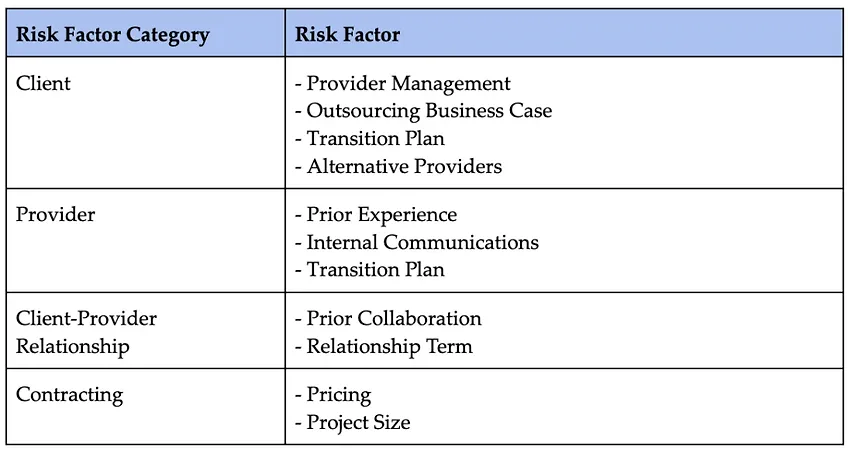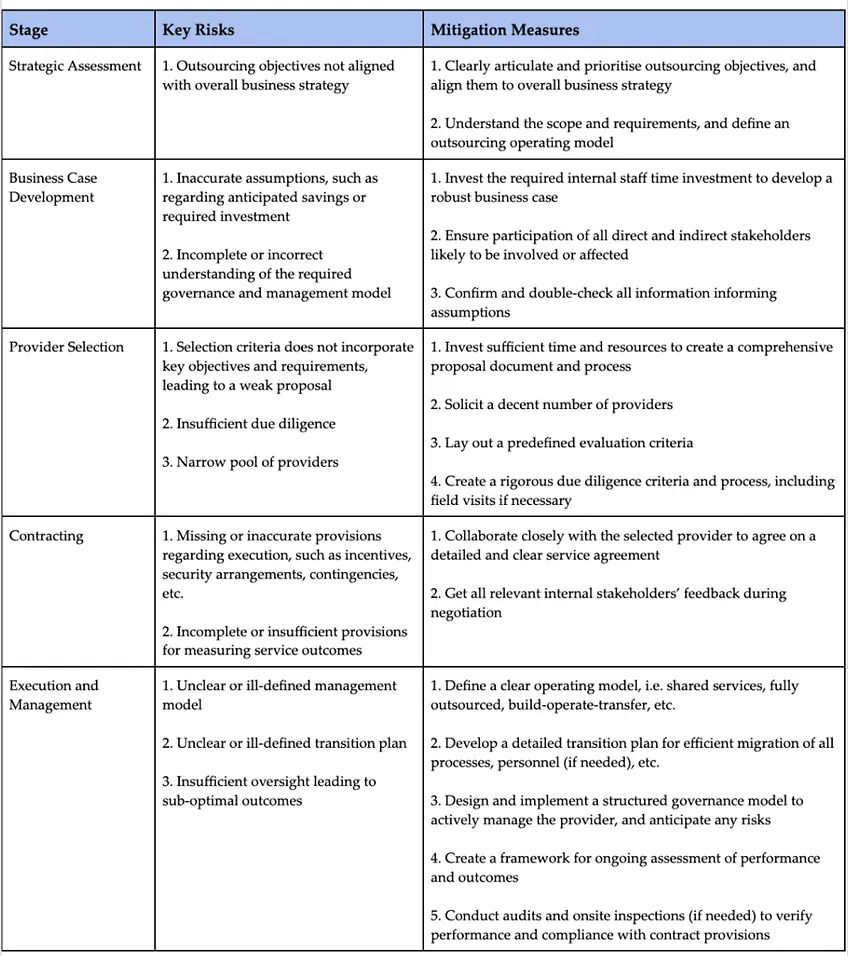How to Avoid Outsourcing Pitfalls



The global outsourcing industry has experienced significant growth and transformation over the years. Outsourcing, which involves delegating specific tasks or services to external vendors or service providers, has become a strategic business practice for organisations worldwide, and continues to thrive as an industry. As we noted in our previous Insights article, companies commonly outsource a range of business functions that includes finance and accounting, human resources (HR), payroll administration, data entry, customer support, IT support, software development, and supply chain management.
While there is little doubt about the future growth potential of the industry, companies looking to outsource for the first time, or those wishing to evaluate its overall potential, can benefit from a critical assessment of how successful the average outsourcing engagement tends to be. Some research suggests that up to 25% of outsourcing relationships can fail within two years. So if outsourcing as an industry is continuing to grow, how can it go wrong for individual firms?
In this article, we have tried to answer this question by digging into the research available on this topic. Although academic research is limited by the fact that most unsuccessful outsourcing relationships are not publicly documented, some studies have been carried out in previous years. Insights from this literature have been extracted, and based on them, a strategic framework to mitigate outsourcing risks is suggested.
Most academic research that does exist on the determinants of outsourcing success or failure is based specifically on IT outsourcing, since this has been one of the major sub-sectors within the broader outsourcing industry. Nevertheless, it yields learnings that can be applied more generally. To do that, we have first summarised the findings from three studies on the topic.
A research study published in 2014 in the Journal of Systems and Software assessed the factors impacting the success or failure of small-scale software projects, conducted through an online marketplace. The analysis was based on a data set of 785,325 projects and tasks completed through the marketplace, and tested multiple possible factors for a possible causal link with the outcome of projects. It found four factors to have a statistically significant effect.
Further insights can be gleaned from a similar research study conducted in 2016 and published in the journal, Science of Computer Programming. It focused on the Dutch IT outsourcing market, and analysed 30 such deals with an average deal size of about 3 million Euro. Compared to the study cited above, this one focused on larger, direct outsourcing partnerships, and thus offers an additional perspective. Furthermore, it investigated factors that tend to be in the control of the client during the initial stages of the outsourcing project. The study found that the following factors tended to be relevant to the chances of success.
Finally, a case study of a well known and large scale outsourcing project that did not succeed offers some additional pointers about risk factors to watch out for. Specifically, it looked at a past attempt of the Australian Federal Government’s attempt at outsourcing its IT infrastructure, abandoned in 2001. Three major learnings can be gleaned from this case.
Provider alternatives: From a client’s perspective, the success of an outsourcing project is defined by its completion, irrespective of who the provider is. Therefore, it is unsurprising that the lack of, or few, alternatives to an existing provider limits the client’s flexibility, raising the risk of failure.
This analysis allows us to draw some generalised but practical conclusions about the nature of risks that typically confront companies. As a starting point to better understand this, we have categorised the above factors by four main types in the table below, as the research highlights the following common elements.
Table 1 : Outsourcing Risk Categories

Mitigating outsourcing risk
This risk framework suggests that while not all factors are under the client’s control, most of them are. So as a first step, firms considering outsourcing need to do some detailed advanced planning from a strategic perspective, so they can anticipate likely risks and devise mitigation strategies.
In view of the research presented in this article, we have a drafted a general checklist of major risks at each stage of the outsourcing process, and key actions that clients can take to manage them proactively throughout the project lifecycle.
Table 2: Outsourcing Risk Mitigation Framework

This checklist can serve as a basic framework that companies can use as a starting point to devise a more thorough strategy to conduct all their outsourcing operations. Of course, the specifics will vary for each firm, depending on which function or functions are being outsourced, which outsourcing model is being used, and other such variables. Nevertheless, in the light of academic research and the critical risk factors identified from it, a structured approach towards de-risking outsourcing efforts is critical for their long term success.












